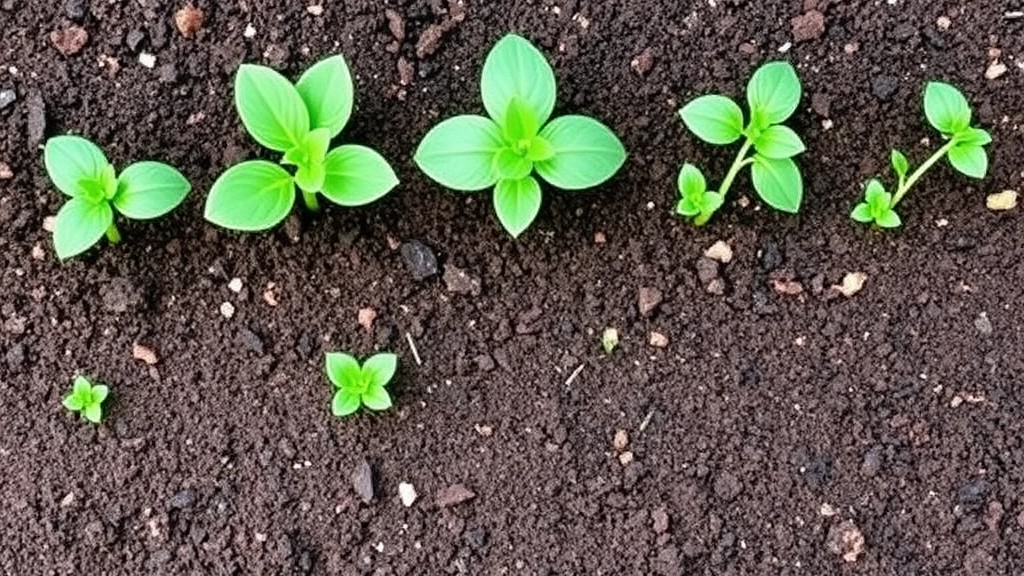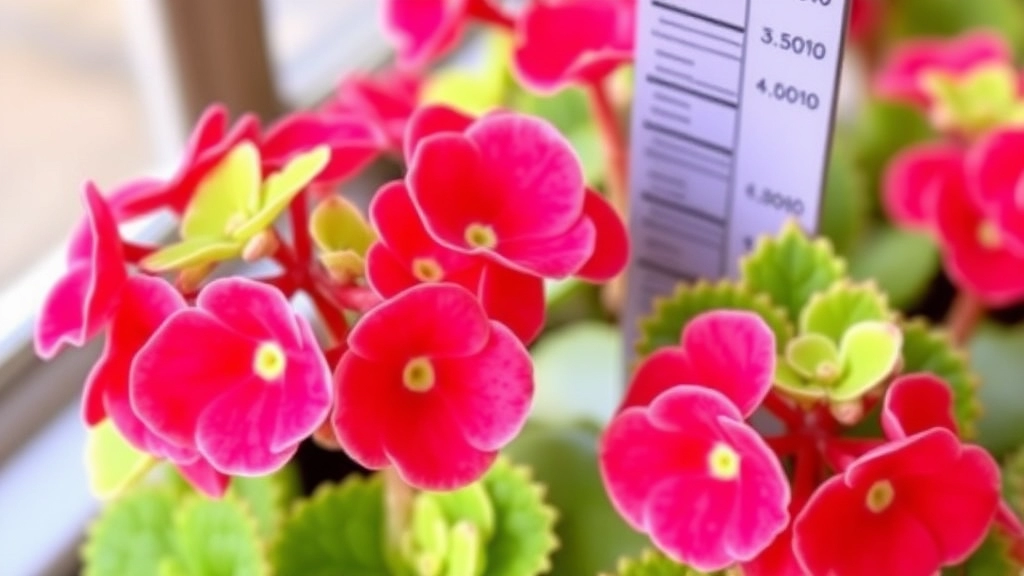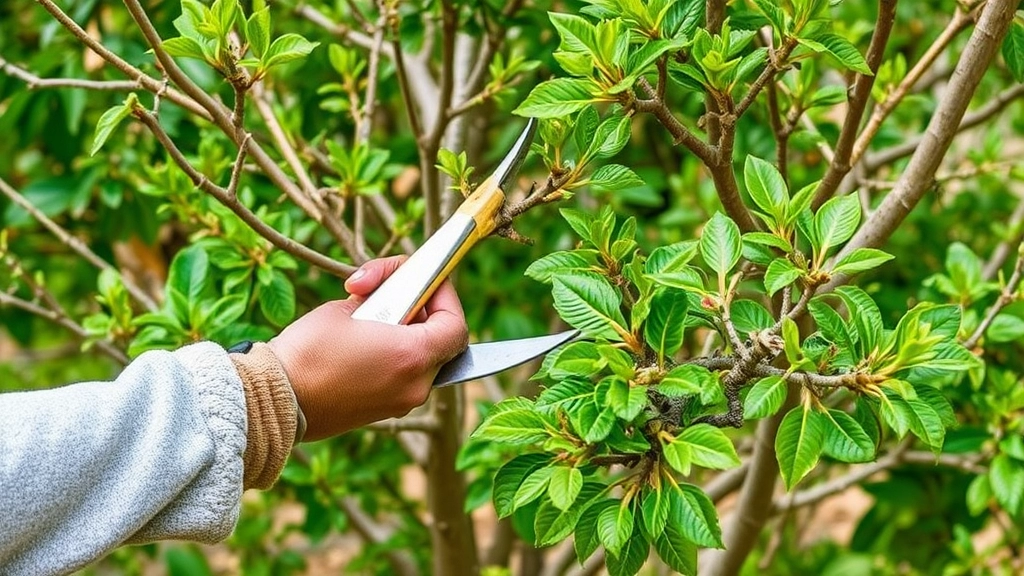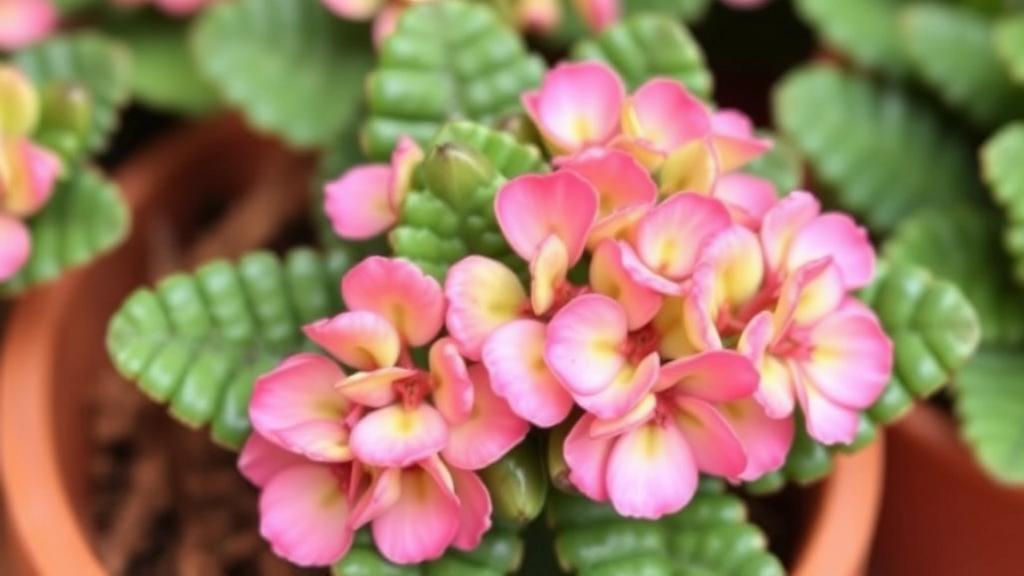Care for Kalanchoe Flapjack
Curious about how to care for Kalanchoe Flapjack? You’re in the right place. This succulent, also known as the paddle plant, thrives with the right light, water, and soil conditions. Ensuring it gets plenty of indirect sunlight and well-draining soil can make all the difference.
Watering your Kalanchoe Flapjack correctly is crucial—let the soil dry out between waterings to avoid root rot. Maintaining the right temperature and humidity levels, along with occasional fertilizing, will keep your plant healthy and vibrant. Read on for more detailed tips on propagation, pruning, and avoiding common issues.
Light Requirements for Kalanchoe Flapjack
Are you struggling to keep your Kalanchoe Flapjack thriving? One of the most crucial factors to consider is its light requirements.
Kalanchoe Flapjack, also known as Kalanchoe luciae, flourishes in bright, indirect sunlight. Here’s what you need to know:
- Optimal Light Exposure: Aim for at least 6 hours of bright, indirect sunlight daily.
- Direct Sunlight: While it can tolerate some direct sunlight, too much can scorch the leaves. Morning sun is usually gentler and more beneficial.
- Indoor Placement: If you’re growing it indoors, place it near a south or west-facing window for maximum light exposure.
- Signs of Insufficient Light: If your plant starts stretching towards the light or the leaves lose their vibrant colour, it may need more light.
In contrast, too little light can lead to leggy growth and a lack of the stunning colour that makes the Flapjack so appealing. For more insights on how to care for similar species, check out our expert tips for healthy growth of Kalanchoe Paddle Plant and our guide on Kalanchoe Beharensis care.
Ideal Soil and Drainage for Healthy Growth

So, you’ve got your Kalanchoe Flapjack and you’re wondering what kind of soil it needs, right?
The truth is, the right soil can make all the difference in keeping your succulent thriving.
Soil Type
Kalanchoe Flapjacks prefer well-draining soil.
- Cactus Mix: A cactus or succulent mix works wonders.
- DIY Mix: You can create your own by mixing regular potting soil with sand and perlite.
This combo ensures that excess water drains away quickly, preventing root rot.
Drainage
Now, let’s chat about drainage.
- Pot Choice: Use pots with drainage holes.
- Layering: Consider adding a layer of gravel or small stones at the bottom of the pot.
This extra step helps with drainage and keeps the roots happy.
pH Level
It’s also good to keep an eye on the pH level of the soil.
- Aim for a slightly acidic to neutral pH (around 6.0 to 7.0).
This range is perfect for your Flapjack to absorb nutrients efficiently.
How to Water Your Flapjack Succulent Correctly
After understanding the light and soil requirements, the next crucial aspect of caring for your Kalanchoe Flapjack is watering.
Many plant enthusiasts often wonder, “How much water does my Flapjack need?” The answer lies in understanding its unique characteristics as a succulent.
Key Watering Guidelines:
- Soil Drying: Always allow the soil to dry out completely between waterings. This prevents root rot, a common issue with succulents.
- Watering Frequency: During the growing season (spring and summer), water every two to three weeks. In winter, reduce this to once a month or less.
- Watering Method: Use the soak and dry method. Water thoroughly until it drains from the bottom, then avoid watering again until the soil is dry.
- Signs of Overwatering: Yellowing leaves or mushy stems indicate too much water. Adjust your watering schedule accordingly.
- Humidity Considerations: If your home is particularly humid, you might need to water less frequently. Pay attention to the environment.
In my experience, observing your plant’s response to watering is key. Each Flapjack may have slightly different needs based on its environment. For more detailed advice on caring for similar plants, check out this Kalanchoe Mother of Thousands care guide or learn about the Kalanchoe Paddle Plant flower care.
Temperature and Humidity Needs for Kalanchoe Flapjack

As we dive deeper into caring for your Kalanchoe Flapjack, understanding its temperature and humidity needs is crucial.
Optimal Temperature Range
Kalanchoe Flapjack thrives best in a warm environment. Ideally, you should maintain temperatures between 20°C to 25°C (68°F to 77°F) during the day.
- Nighttime Temperatures: At night, it can tolerate slightly cooler temperatures, ideally around 10°C to 15°C (50°F to 59°F).
- Avoid Frost: Be cautious—temperatures below 5°C (41°F) can be detrimental to its health.
Humidity Levels
Kalanchoe Flapjack prefers a dry atmosphere.
- Ideal Humidity: Aim for humidity levels around 30% to 50%.
- Avoid High Humidity: Excess moisture can lead to root rot and fungal issues.
Tips for Maintaining Ideal Conditions
- Indoor Placement: If you’re keeping your Flapjack indoors, place it near a window with plenty of sunlight, but avoid direct drafts from air conditioning or heating.
- Outdoor Care: If grown outdoors, ensure it’s in a sheltered spot that gets ample sunlight but is protected from harsh winds.
Fertilizing Tips: When and How Often
As we delve into the care of Kalanchoe Flapjack, it’s essential to consider how fertilization plays a role in its overall health and vibrancy.
Why Fertilize?
Fertilizing your Flapjack succulent can significantly enhance its growth and colour. However, knowing when and how often to fertilize can be a bit tricky.
When to Fertilize:
- Spring and Summer: This is the active growing season for Kalanchoe Flapjack. Fertilize every 4-6 weeks during these months.
- Autumn and Winter: As the plant enters dormancy, reduce or completely stop fertilizing. This helps prevent over-fertilization, which can harm the plant.
How to Fertilize:
- Type of Fertilizer: Use a balanced, water-soluble fertilizer with an NPK ratio of 10-10-10 or similar.
- Dilution: Always dilute the fertilizer to half the recommended strength. Succulents are sensitive to high nutrient levels.
- Application Method:
- Water the plant thoroughly before applying fertilizer to prevent root burn.
- Apply the diluted solution directly to the soil, avoiding the leaves.
Signs of Over-Fertilization:
- Yellowing leaves
- Stunted growth
- Leaf drop
By keeping an eye on your plant’s health, you can adjust your fertilization routine accordingly. For more detailed advice, you might find our Kalanchoe Paddle Plant Care Guide helpful. Additionally, if you notice any issues like drying leaves, our guide on causes and fixes for drying Kalanchoe leaves can provide valuable insights.
Pruning and Maintenance to Encourage Growth

So, you’ve got your Kalanchoe Flapjack thriving, but how do you keep it looking its best?
Pruning is a game-changer for these succulents. It’s not just about aesthetics; it helps encourage healthy growth and keeps your plant in check.
Why Prune?
- Promotes New Growth: Cutting back old leaves can stimulate fresh, vibrant growth.
- Prevents Overcrowding: Regular pruning helps maintain shape and prevents your plant from getting leggy.
- Health Check: It’s a great opportunity to inspect for pests or disease.
When to Prune?
- Spring is Ideal: This is when your Kalanchoe Flapjack is waking up from dormancy, making it the perfect time to give it a trim.
- Remove Dead or Dying Leaves: Anytime you spot them, don’t hesitate to snip them off.
How to Prune:
- Use Clean, Sharp Tools: A pair of scissors or pruning shears works wonders.
- Cut at the Base: Trim leaves or stems close to where they meet the main plant.
- Avoid Over-Pruning: Aim for a light trim rather than a drastic cut.
Maintenance Tips:
- Dust Off Leaves: Wipe them down occasionally to keep them clean and help with photosynthesis.
- Check for Pests: Regularly inspect for mealybugs or aphids. Catching them early makes a huge difference.
- Rotate Your Plant: This ensures even growth, as all sides get equal light.
Propagation Methods for New Plants
After ensuring your Kalanchoe Flapjack thrives in its environment, you might find yourself wondering how to expand your succulent collection. Propagation is a rewarding way to create new plants from your existing ones.
Propagation Techniques
There are several effective methods for propagating Kalanchoe Flapjack:
Common Issues and How to Avoid Them

So, you’ve got your Kalanchoe Flapjack all set up, but what if things start to go south? It’s a bummer when your succulent starts looking sad, but don’t fret! Let’s dive into some common issues and how to dodge them like a pro.
1. Overwatering
This is probably the biggest culprit. Flapjacks love their soil to dry out between watering.
- Signs: Yellowing leaves, mushy stems.
- Solution: Check the soil moisture before watering. Stick your finger in about an inch deep. If it’s still moist, hold off!
2. Underwatering
On the flip side, neglecting your plant can also lead to trouble.
- Signs: Wrinkled, shriveled leaves.
- Solution: Water deeply but infrequently. Aim for every 2-3 weeks, depending on your environment.
3. Poor Light Conditions
These beauties thrive in bright, indirect sunlight. Too little light can stunt their growth.
- Signs: Stretching or leggy appearance.
- Solution: Move them to a brighter spot, but avoid direct harsh sunlight that can scorch the leaves.
4. Pest Problems
A few unwelcome guests can ruin your Flapjack’s vibe.
- Common Pests: Mealybugs, aphids, and spider mites.
- Solution: Regularly inspect your plant. If you spot pests, wipe them off with a damp cloth or use insecticidal soap.
5. Fungal Issues
Excess moisture can lead to fungal infections.
- Signs: Dark spots on leaves or a fuzzy mold.
- Solution: Ensure good airflow and avoid wetting the leaves when you water.
6. Nutrient Deficiency
Even though Flapjacks are low-maintenance, they still need some TLC.
- Signs: Stunted growth or discolored leaves.
- Solution: Use a balanced succulent fertilizer during the growing season.
Toxicity Considerations for Pets and Humans
As a plant lover, you might be wondering: Is my Kalanchoe Flapjack safe for my pets and family?
Understanding Toxicity Levels
Kalanchoe Flapjack (Kalanchoe luciae) is considered mildly toxic. This means that while it’s not deadly, it can cause some unpleasant symptoms if ingested.
Common Symptoms of Ingestion:
- Vomiting
- Diarrhoea
- Lethargy
- Drooling
Precautions to Take
To keep your home safe, here are some straightforward steps you can follow:
- Placement: Keep your Flapjack out of reach of pets and small children. High shelves or hanging planters work well.
- Education: Teach family members about the plant and its potential risks.
- Supervision: Always supervise pets around plants, especially if they are prone to nibbling. For more specific tips, you can read about protecting your pets from poisoning.
What to Do If Ingested
If you suspect your pet or child has ingested part of the Kalanchoe Flapjack, take action promptly:
- Contact a Veterinarian or Doctor: They can provide the best advice based on the situation.
- Observe Symptoms: Keep an eye on any signs of distress and report them to the professional. For more detailed guidance, check out our comprehensive guide on Kalanchoe toxicity.
FAQs: How To Care For Kalanchoe Flapjack
What type of soil is best for Kalanchoe Flapjack?
Kalanchoe Flapjacks prefer well-draining soil. A cactus or succulent mix is ideal, or you can create your own mix by combining regular potting soil with sand and perlite.
How important is drainage for Kalanchoe Flapjack?
Drainage is crucial. Use pots with drainage holes and consider adding a layer of gravel or small stones at the bottom to help excess water drain away, preventing root rot.
What is the ideal pH level for Kalanchoe Flapjack soil?
A slightly acidic to neutral pH, around 6.0 to 7.0, is perfect for your Flapjack to absorb nutrients efficiently.
What temperatures are optimal for Kalanchoe Flapjack?
During the day, maintain temperatures between 20°C to 25°C (68°F to 77°F). At night, they can tolerate slightly cooler temperatures, ideally around 10°C to 15°C (50°F to 59°F). Avoid temperatures below 5°C (41°F).
What humidity levels are best for Kalanchoe Flapjack?
Kalanchoe Flapjack prefers a dry atmosphere with humidity levels around 30% to 50%. Excess moisture can lead to root rot and fungal issues.
How do I prune my Kalanchoe Flapjack?
Use clean, sharp tools like scissors or pruning shears. Trim leaves or stems close to where they meet the main plant. Aim for a light trim rather than a drastic cut, and remove dead or dying leaves whenever you spot them.
When is the best time to prune Kalanchoe Flapjack?
Spring is ideal, as your Kalanchoe Flapjack is waking up from dormancy. This is the perfect time to encourage new growth and maintain shape.
What are common problems with Kalanchoe Flapjack and how can I avoid them?
- Overwatering: Check soil moisture before watering. Yellowing leaves and mushy stems are signs of overwatering.
- Underwatering: Water deeply but infrequently. Wrinkled, shriveled leaves indicate underwatering.
- Poor Light Conditions: Ensure bright, indirect sunlight. Stretching or a leggy appearance is a sign of insufficient light.
- Pest Problems: Regularly inspect for mealybugs, aphids, and spider mites. Use insecticidal soap if needed.
- Fungal Issues: Ensure good airflow and avoid wetting the leaves. Dark spots or fuzzy mold are signs of fungal infections.
- Nutrient Deficiency: Use a balanced succulent fertilizer during the growing season. Stunted growth or discolored leaves indicate a lack of nutrients.
How do I maintain my Kalanchoe Flapjack to keep it healthy?
- Dust Off Leaves: Wipe them down occasionally to keep them clean and help with photosynthesis.
- Check for Pests: Regularly inspect for mealybugs or aphids. Catching them early makes a huge difference.
- Rotate Your Plant: This ensures even growth, as all sides get equal light.
References
-
How To Grow Flapjack Plants
-
Kalanchoe Flapjack Plant Care
-
How to grow kalanchoe
